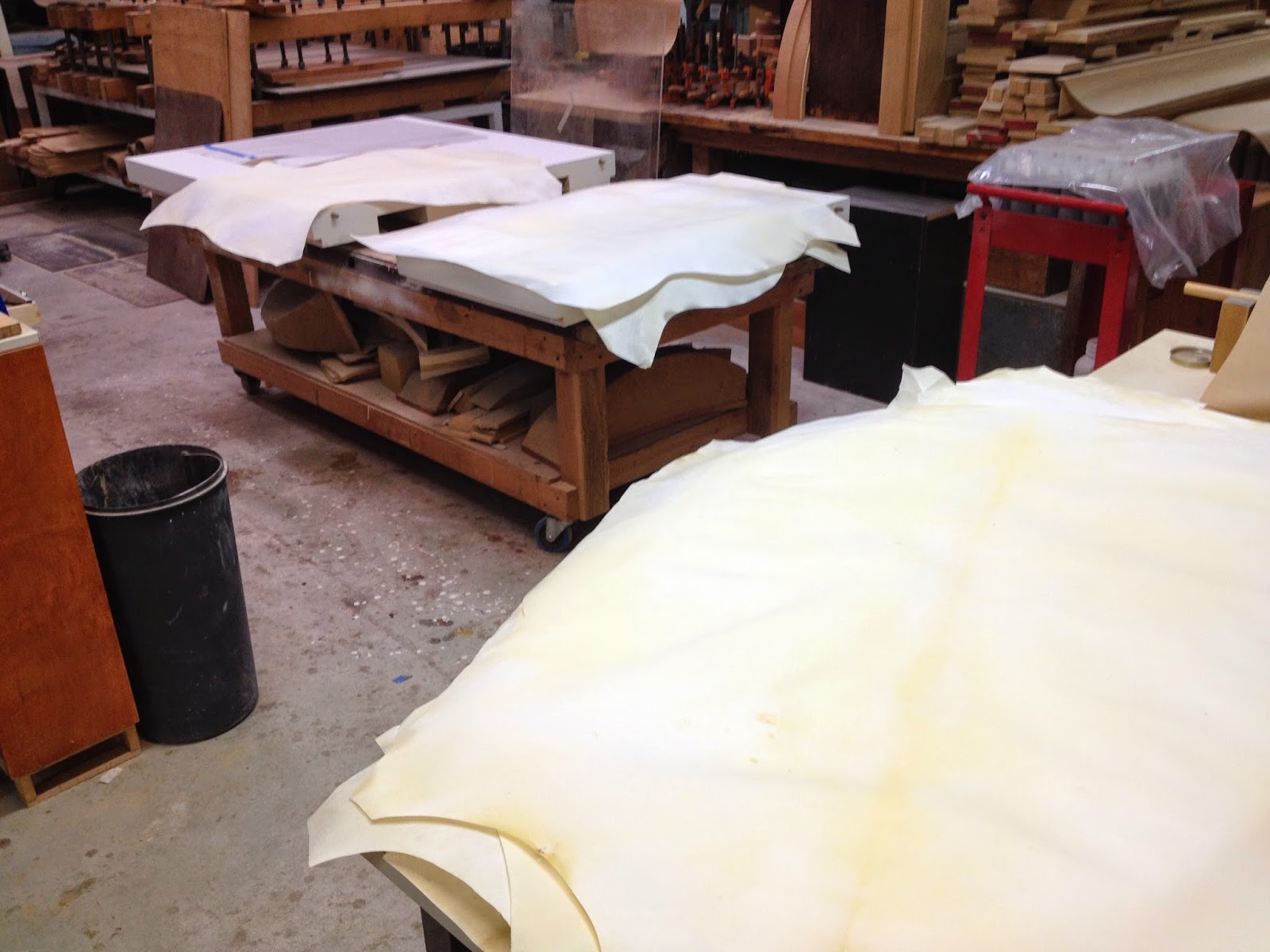It has been a while since i did parchment jobs. If I can give anyone advice it will be stay away from it.
I usually use goat skin parchment which is not as smooth and nice than the sheep, but larger. I needed big skin for that job. Parchment is like an animal, it is still very alive. It does not like moisture pressure and heat. If you press it real hard it will go back to transparency, if you heat it it will go back to transparency or you may burn the top layer of the skin which is protein, and as soon as you apply moisture like glue it stats curling like mad.
I got that job as the top skin of the table had been damage during the redoing of the polyester finish covering the skin. This finish on parchment was very trendy in the 50’s but polyester has a life span not that great, it is plastic after all, and sanding the skin was not an option as the owner discovered. The textured surface is a very thin layer and if you go through by sanding, you loose it and have the meat side appearing and blotchiness, which is not very attractive.
I started by applying gesso to the table top. Gesso is a mix of rabbit skin glue, water and calcium carbonate, a white powder. I like it under the parchment as it has a natural affinity with the liquid hide glue and the skin, they are all protein based.
This is one end of the table and the middle leaf, it weigh as much as a dead horse and seems to be made of lead rather than ply.
I did paper pattern to check where to cut on the skin. The spine of the skin neded to align in the center of the panels and I neded room for the folds. I also included the location of the spine for alignment.
Then I laid out the skins to find which will go where.
Protein glue is the best option for parchment as there is a chemical as well as a mechanical bound. Anyway in my opinion hide glues are always the way to go except maybe for the outside furniture. I chose liquid hide glue as it is way way easier to manage than the hot hide glue, especially with parchment and I chose Old Brown Glue, not only because I think it is the best, and not only because my partner manufactures it and I get it for free, but also because there is no chemical crap in it. I added calcium carbonate to it to turn it ivory color, not really needed as Old Brown Glue does not stain, but I like it that way.
Here is a view of my corner and my set up for the job
I start applying the skin in a corner, let it dry a bit to let time for the skin to retract, then cut the sims, clean the excess glue with water and advance in diagonal. You can see in the back the central leaf with half the folds done. The skin is already glued down but I place weight on it just saw it does not curl away when I am not looking.
The folds are made by wetting the skin, not to much, just enough to make them flexible enough, and I fold them with a bone folder you can see under the clamp on the left, then I press it on to hard just enough to have it stay in place and stop moving. I have also to be careful to not mark the top while clamping, the skin will squish and show any marks. Also i will try to cut a nice 90 degrees angle for the skins but once wet, the skin expend at different rate at different places so there is no such things as a straight line or a perfect angle once the glue is applied and you have to fight with it to make it go where you want it to stay.
Just a cleaning with cold water and we are done.
Working with parchment is a bit like wrestling with the goat it comes from and it lives us exhausted after a week work.
-- Patrice lejeune
- See more at: http://lumberjocks.com/projects/102956#sthash.oRPmpcqd.dpuf



















